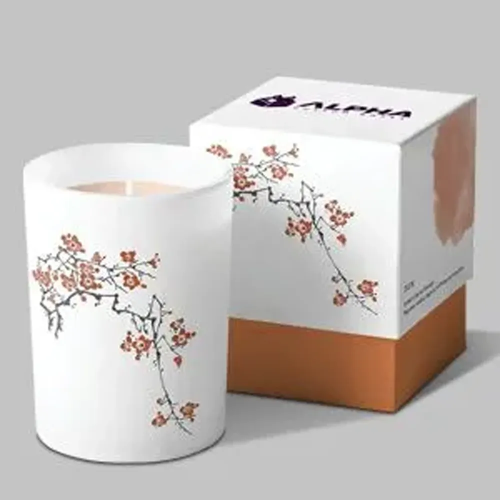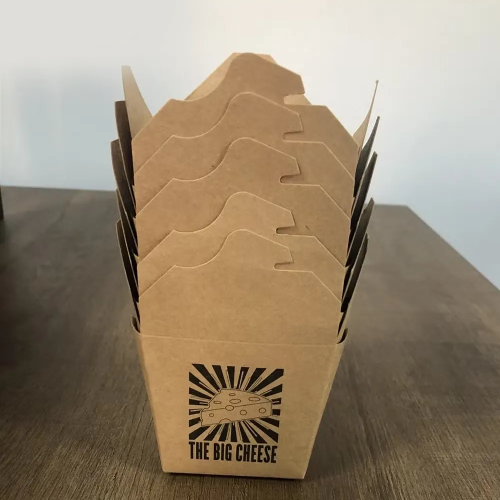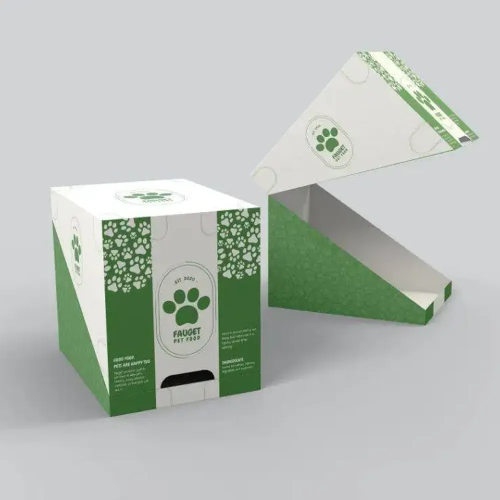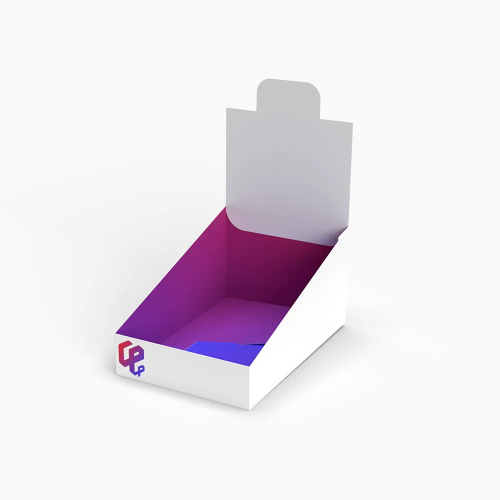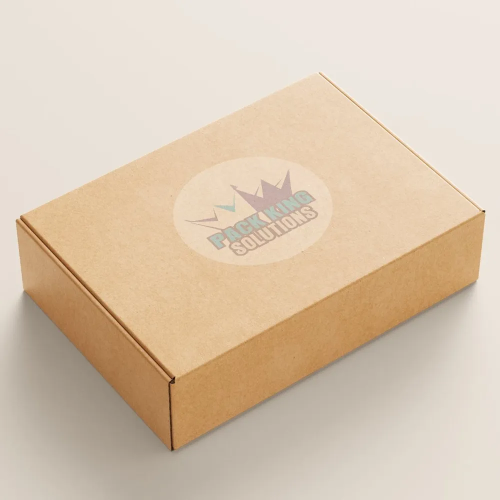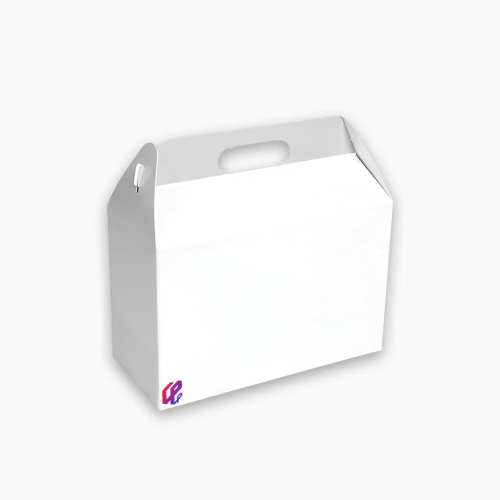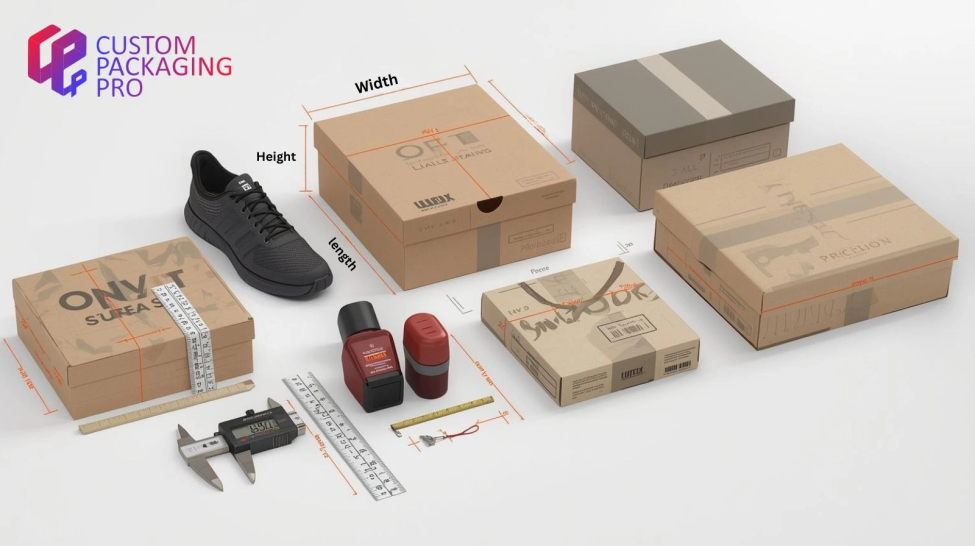Length, Width, and Height: The Secret Behind This Measurement
November 07, 2025
When you see a product listed online with dimensions like 12 x 8 x 5, do you ever pause for 2 seconds and wonder, what comes first, length or width? You’re not alone. Whether you’re packaging products, designing furniture, or buying a rug, understanding length, width, and height is essential. It helps you get the right fit every time.
You’ve probably searched “what is length and width?” or “how to measure a box?” at some point. Don’t worry, this guide will answer all those questions in the simplest, clearest way possible.
At Custom Packaging Pro, we’ve seen how these simple measurements can make or break a design, a shipment, or even a brand impression. Whether it’s measuring cosmetic packaging or large retail boxes, let’s break down the mystery behind measurements of boxl x w x h and learn how to read dimensions like a pro.
What Do Length, Width, and Height Really Mean?
Before you grab a ruler or tape measure, it helps to know what each term means:
- Length: The longest side of an object, running from end to end.
- Width: The shorter side, showing how wide something is.
- Height: The measure from top to bottom (how tall something stands).
If you look at a rectangular box, the length runs from front to back, the width goes side to side, and the height goes from base to top.
Many people ask, “Is length or width first?” or “Is it L × W × H or H × W × L?” The answer depends on what you’re measuring, but the most common order is Length × Width × Height (L × W × H).
Here’s a quick example:
- A box that’s 10 × 8 × 6 inches means it’s 10 inches long, 8 inches wide, and 6 inches tall.
These three measurements make up your dimensions, often written as L × W × H or HxWxD depending on the product type.
How to Measure Like a Pro
Whether it’s a shipping box, furniture, or a carpet, measuring properly ensures the right fit.
Here’s how to do it correctly:
- Find the Length – Measure the longest side from one end to the other.
- Measure the Width – Measure the shorter side that’s perpendicular to the length.
- Check the Height – Measure from the base to the top or the highest point.
Tip: Always measure in the same unit, inches, centimetres (cm), or millimetres (mm), to keep numbers consistent.
A common question is, “Does width or height come first?” In most package dimensions, length comes first, followed by width, then height. So, L × W × H is the universal format used by Custom Packaging Pro and many industries.
People also wonder, “Is width horizontal or vertical?” Usually, width is horizontal, while height is vertical. But don’t stress; as long as you stay consistent in your format, you’ll be fine.
When using a tape measure for box dimensions, remember:
- Width goes side to side.
- Height goes up and down.
- Depth can also mean the same as height when measuring containers.
This simple process works not only for boxes but also for tables, frames, windows, drawers, and machines, basically, anything with a defined shape.
Another common query is “What is LxWxH in measurements?” It simply represents Length × Width × Height, a universal format used across industries like manufacturing, construction, furniture, and packaging.
Dimensions in Everyday Products
We see length, width, and height everywhere, even if we don’t notice it. From your bedroom furniture to the packaging box that lands on your doorstep, these dimensions determine how everything fits, looks, and functions.
Let’s explore a few examples you probably interact with every day:
- Smartphones – The length and width define screen size, while height (or thickness) affects how it feels in your hand.
- Furniture – Sofas, tables, and cabinets are sold using L × W × H to ensure they fit into your space.
- Shipping boxes – Couriers use exact box dimensions to calculate shipping cost, based on both size and weight.
- TVs and Monitors – When you see “55-inch TV,” that number refers to the diagonal length of the screen, not the width.
- Curtains or carpets – Their length and width ensure proper coverage for your floors or windows.
You might have searched “what does height mean in measurements?” or “how to read dimensions on a box?” These are questions most people face when shopping online or sending a parcel. The rule of thumb:
Dimensions are usually listed as Length × Width × Height, with all numbers in the same unit (inches or centimeters).
That’s how companies like Custom Packaging Pro label their boxes to keep every measurement crystal clear for customers.
Why Accurate Dimensions Matter in Packaging
If you run a business or deal with product packaging, accurate dimensions are critical. A small mistake in box size can lead to wasted material, higher shipping costs, or even damaged goods.
Here’s why getting your length, width, and height right makes all the difference:
- Saves cost: Right dimensions reduce material waste and lower shipping fees.
- Protects products: A perfectly sized box reduces risks of damage during transit.
- Improves shelf appeal: Well-proportioned packaging looks more professional and fits neatly on retail displays.
- Boosts customer satisfaction: When products arrive in perfectly fitting boxes, customers perceive higher quality.
You might wonder, “What if I measure the inside of a box instead of the outside?” Great question! In packaging, dimensions are often internal (measuring inside space), because that determines how much the box can hold.
So, when Custom Packaging Pro lists custom packaging box sizes, we refer to internal dimensions, ensuring your products fit perfectly inside. Another common query is “Are depth and height the same?” In most cases, yes, depth refers to how tall or deep something goes, depending on orientation.
How to Calculate Volume
Once you’ve mastered length, width, and height, the next step is learning how to calculate volume, the total space an object occupies.
The simple formula is:
Volume = Length × Width × Height
Example:
If a shipping box measures 12 inches (L) × 8 inches (W) × 6 inches (H), then:
Volume = 12 × 8 × 6 = 576 cubic inches
That’s how much space the box can hold.
Businesses use this formula daily to:
- Estimate storage capacity
- Determine shipping rates
- Design packaging layouts for products
Have a look at the quick conversion tip:
- 1 cubic inch = 0.0164 liters
- 1 cubic centimeter = 0.001 liters
So, if you ever see “how to calculate cubic inches from L × W × H” in a search result, now you know it’s simply multiplying all three dimensions.
It’s that easy, but surprisingly powerful for both personal use and industrial packaging design.

Common Confusions (and Quick Fixes)
Measuring length, width, and height can be tricky. Many people ask, “Is width or length first?” The correct order is always length × width × height (L×W×H).
Wondering, “Is width vertical or horizontal?” Width is horizontal; height is vertical.
You might ask, “What is depth?” "Depth" usually means height, depending on the object.
“How are measurements read?” They go left to right, front to back, and bottom to top.
Still unsure, “Which side is length and which is width?” Face the product: the longer side is length, the shorter side is width, and top-to-bottom is height.
Here’s a quick visual:
Length – front to back
Width – side to side
Height – bottom to top
Always double-check box dimensions and box measurements using L×W×H. Tools from Custom Packaging Pro make this easy and accurate, especially when designing rigid boxes or other custom packaging solutions.
For Businesses: Get Dimensions Right Every Time
If you run an e-commerce brand or packaging business, mastering dimensions isn’t optional; it’s essential.
Companies like Custom Packaging Pro recommend these simple steps:
- Use standard units — Always measure in millimeters or inches, and stick with one format.
- Measure twice, cut once — Double-check length, width, and height before printing packaging templates.
- Label correctly — Write measurements clearly as L×W×H, never mixed up.
- Test fit — Before bulk production, fit-test your product inside the box.
- Record box sizes — Keep a log of each product dimension to reorder confidently.
You might also wonder, “Do boxes list inner or outer dimensions?” For packaging, it’s almost always inner dimensions since that space determines how much of your product fits.
Getting this right not only saves time but also makes your brand look professional and reduces waste.
Real-World Examples: Box, Bag & Bottle Measurements
Let’s take a look at how different industries apply these measurements:
1. Packaging & Shipping
When a shipping label says “12×9×6,” that’s length, width, and height in that order.
A common query like “what is the length, width, and height of a box?” is answered exactly that way.
2. Furniture & Decor
Ever searched “how are couches measured?” or “how to size an area rug?” — Furniture dimensions also follow the L×W×H format, ensuring everything fits perfectly in your home.
3. Tech & Gadgets
Height refers to the thickness of a device, such as a phone or laptop. That is why you may see length, width, and depth rather than height.
4. Bottles & Containers
In the food industry, diameter and height are used instead of length and width, but the principle is the same.
Tools That Make Measuring Easier
Old techniques, such as measuring by hand, work, but if you want accuracy, use these smart tools:
- Digital Calipers – For precise width and height readings.
- Measuring Tape – The simplest way to find length and width.
- Box Dimension Calculators – Online tools that compute volume instantly.
- 3D Scanners – For complex objects like sculptures or electronics.
If you ever googled “how to do length times width times height?” These tools can handle that math for you.
Custom Packaging Pro often recommends digital tools to customers for customising retail boxes, since accuracy ensures perfect fitting.
Tips to Avoid Dimensional Errors
Here’s how professionals keep their measurements accurate every time:
- Keep orientation consistent (length first, width second, height last).
- Label boxes clearly — write L×W×H right on your prototype.
- Cross-check before printing your packaging design.
- Account for product padding if using inserts or wraps.
- Use proper measuring tape (avoid fabric tape for rigid boxes).
Even small errors like swapping width and height can cause packaging defects or shipping miscalculations.
A common search like “Is the first number width or length?” shows how frequent this issue is, but now you know the right order!
Precision Shapes Your Success
Understanding length, width, and height is the foundation of every successful product and packaging design. Whether you’re shipping a tiny trinket or building furniture, the correct box dimension formula ensures your product fits, looks, and arrives safely.
For small businesses and manufacturers alike, accuracy builds trust, and that’s where Custom Packaging Pro stands out. From measuring product boxes to creating custom designs that fit perfectly, we make sure every inch counts.
So, for the next time, you can answer about “How do you find the dimensions?” or “Which part is length and which is width?” confidently.
Measure Smart with Custom Packaging Pro
What do you think getting dimensions right is just about math? No! It’s about making your product look professional and traveling safely. From simple length, width, and height questions to advanced packaging dimension planning, Custom Packaging Pro helps businesses measure smarter, ship faster, and save more.
So next time you’re unsure about length by width by height, remember: Custom Packaging Pro has the tools, the team, and the expertise to make every measurement count.

FAQs
Q1. What comes first, length or width?
A. Length always comes first, followed by width and height.
Q2. Are the box dimensions inside or outside measurements?
A. Usually, inside, to measure how much the box can hold.
Q3. What’s the difference between depth and height?
A. They’re often the same; it depends on the item’s orientation.
Q4. How do you calculate box volume?
A. Multiply length × width × height to get cubic volume.
Q5. What does L×W×H mean?
A. It’s the standard order of measuring any product or box.
Q6. Which unit is best for packaging measurements?
A. Millimeters or inches, just stay consistent across all dimensions.
Q7. How to measure furniture dimensions?
A. Measure the longest side for length, the shorter side for width, and the floor to the top for height.
